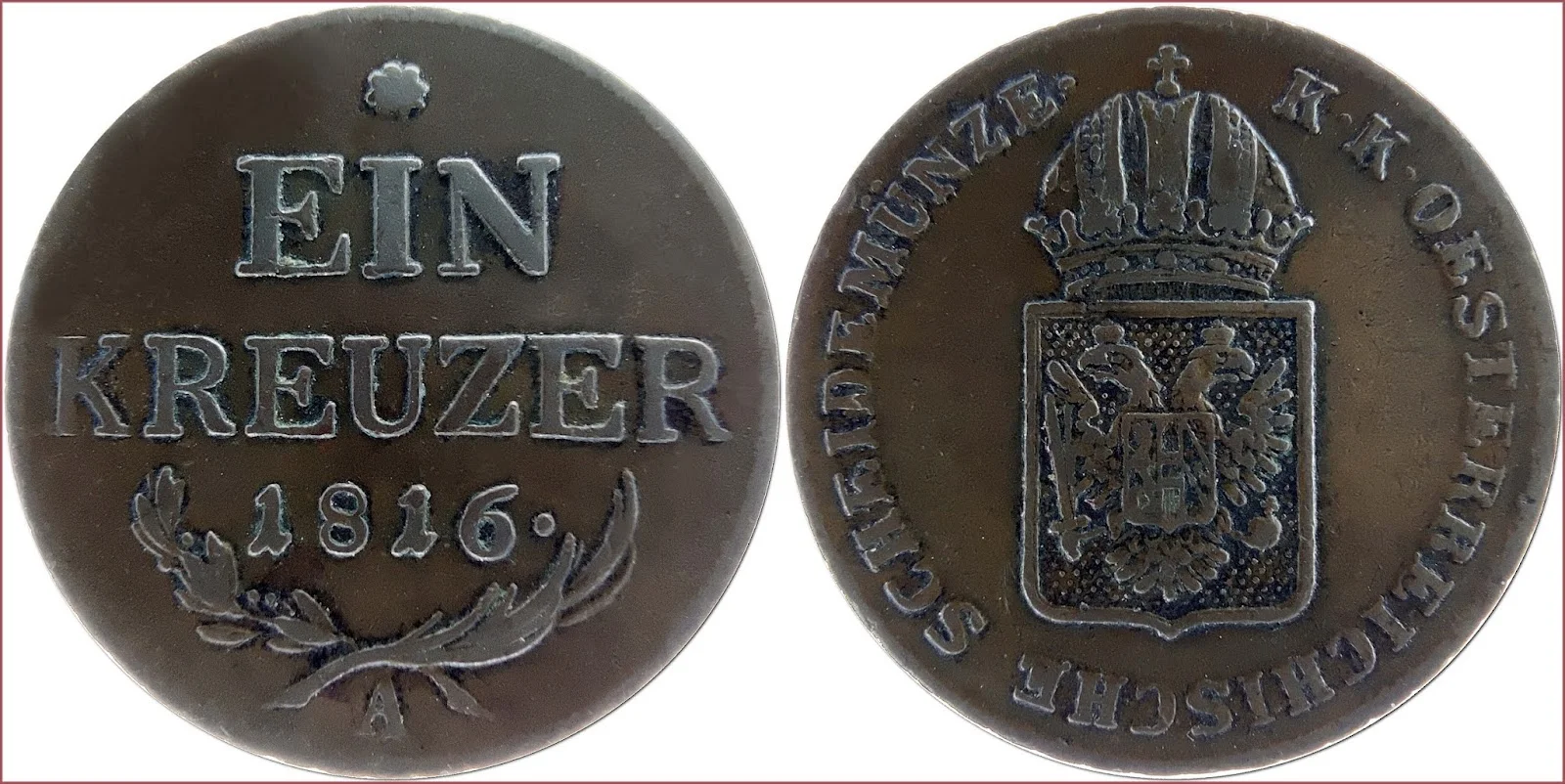KREUZER: COIN OF AUSTRIA
1 kreuzer, 1816: Austrian Empire
EIN KREUZER - 1816: One kreuzer, 1816.
A: sign of Vienna mint (since 1989 — Austrian Mint), Austria.
Wreath and eight-pointed star.
K K OESTERREICHISCHE SCHEIDEMÜNZE: Imperial-Royal (German "Kaiserliche und Königliche") loose change (small money) of Austria.
Coat of arms of Austria as part of the Austrian Empire.
Interesting: this coin with the 1816 year was minted until 1852 at various mints on the territory of modern Austria, Slovakia and Romania ("A" — Vienna, "B" — Kremnica, "E" — Carlsburg, "G" — Baia Mare, "O" — Oravița, "S" — Smolnik).
- Copper: 26.5 mm - 8.6 g
- Reference price: 8$
COIN KREUZER — WHERE & WHEN (coins catalog: by names & emitents)
- AUSTRIA (13th-19th centuries): HABSBURG MONARCHY (AUSTRIA) + AUSTRIAN STATES (Counts of Dietrichstein, Further Austria, County of Görz, Bishopric of Gurk, Bishopric of Salzburg...) + AUSTRIAN EMPIRE: kreuzer = 1/60 thaler; kreuzer = 8 heller = 1/60 gulden
- GERMAN STATES (16th-19th centuries): Free imperial city of Aachen, Principality of Anhalt, Grand-duchy of Baden, Electorate of Bavaria, Brandenburg-Ansbach, Free imperial city of Frankfurt, Landgraviate of Hessen-Darmstadt, Electorate of Hessen-Kassel, Joint coinage of Löwenstein-Wertheim, Duchy of Nassau, Free imperial city of Nürnberg...
- FRANCE (16th-18th centuries) — Imperial City of Colmar, City of Hagenau: kreuzer = 1/60 gulden
- BOHEMIA (16th-18th centuries) — SILESIA (Duchy of Münsterberg-Oels, Duchy of Liegnitz-Brieg, Duchy of Krosno, Duchy of Jägerndorf, Bishopric of Breslau, Royal Mint of Silesia, City of Strzegom, Duchy of Teschen, Duchy of Troppau…) + KINGDOM OF BOHEMIA: kreuzer = 7 heller = 1/60 thaler
- SWISS CANTONS (16th-19th centuries): Aargau, Appenzell, Basel, Chur, St. Gallen, Thurgau...
The name of the kreuzer coin reflects the main motif of the first coins of this type. The very first kreuzer minted in 1271. On the obverse was a double cross (the imposition of ordinary and St. Andrew's crosses), because of which the coin later received its name (in German "Kreuz" — cross). Due to its good quality, the coin soon became widespread in southern Germany.
Interestingly, during the centuries of minting coins of this type in Europe, there are equally coins of the denomination kreuzer and kreutzer (no pattern in the use of this or that option has been traced). From a formal, etymological point of view, kreuzer and kreutzer are two different coins (albeit critically related).











